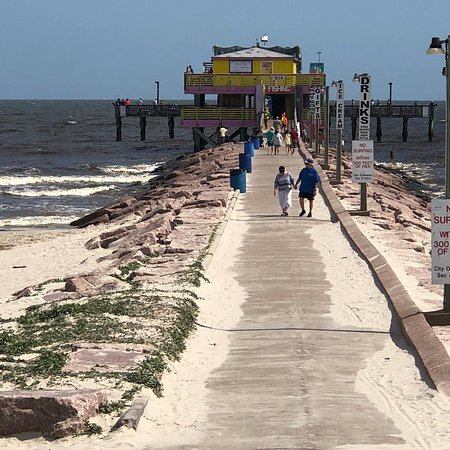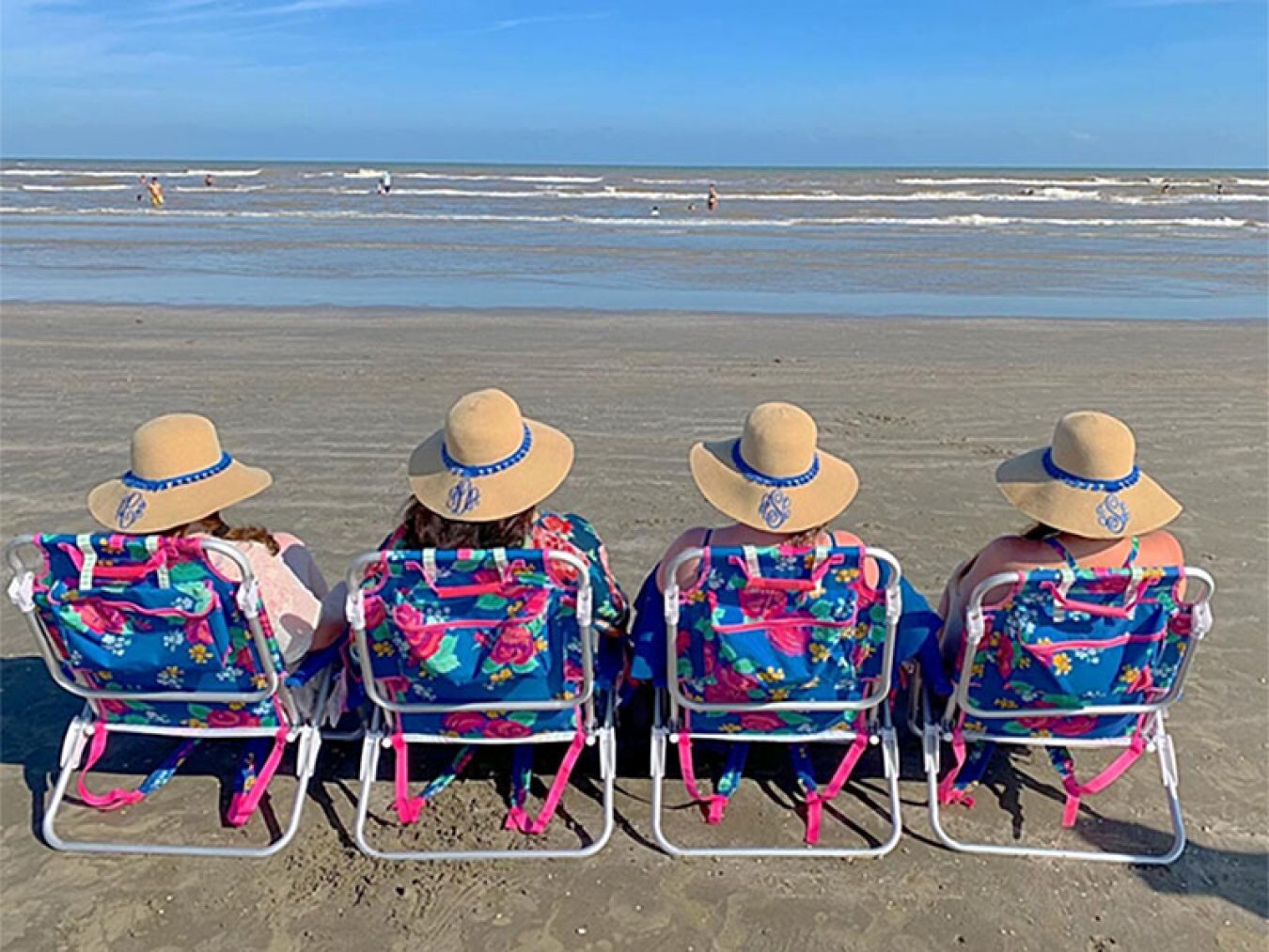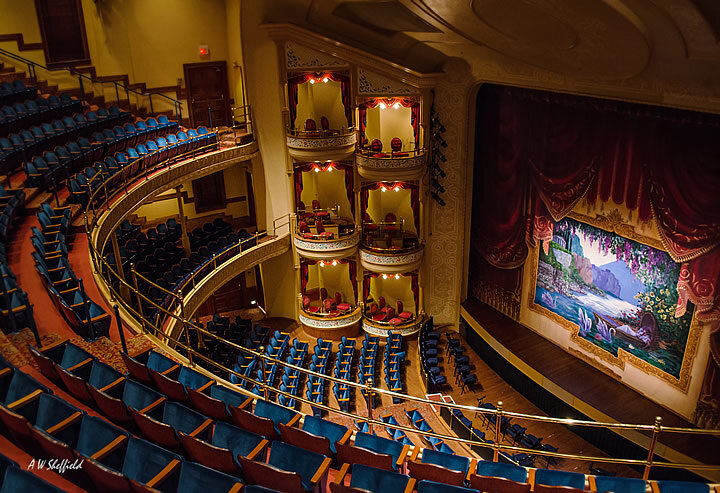Tree Sculptures
Hurricane Ike was a major storm, one that few here will ever forget. It blew across Galveston Island on September 13, 2008, and its damaging winds played havoc on many structures and uprooted many of the island’s most beloved trees. Thousands of other trees were lost, as well. They simply could not survive the salty flood waters of a 15-foot tidal surge. (Sadly, many of the lost trees were planted right after the Great Storm of 1900 to reforest the island.)
Months after Ike, artists took matters into their own hands and began to replace the majestic oaks that once lined many neighborhood streets with whimsical tree sculptures. Now, there are more than 35 of them dotting the island landscape. Many are located in the Historic East End District.
This morning, I decided to spend a couple of hours “playing tourist” and seek out some of these most unique masterpieces.
I had heard “3 Pelicans and a Fish” could be found near The Mosquito Cafe, so I headed in that direction first and there, behind the restaurant, I spotted it. This great work is one of 10 tree sculptures in Galveston created by Indiana artist Dayle Lewis.
I found another Lewis’ sculpture, “Great Dane,” at 1228 Sealy (facing 13th Street). The owners of the home here have a Great Dane, named Hunter. Apparently, the old tree had actually grown around the fence at the very spot where the paws in the sculpture grip the fence.
Sadly, just after “Great Dane” was finished, someone stole one of the paws. I hear the homeowner offered a reward: $50 for the return of the paw and $500 for the hands of the thief! Fortunately, the sculptor, who was still on the Island, carved and installed a new paw.
In the yard of the red brick house at 511 17th Street, I found “Angel Cradling Bunny,” one of seven tree sculptures created by Houston artist Jim Phillips. At this house on the corner, the sculpture watches over the yard, which is a bird, butterfly and bunny sanctuary.
Happy to say, I found several other works by Phillips today. “Dalmatian” and “Fireplug” were two of my favorites. They are located on the grounds of Galveston City Hall, near the Fire Station 1.
“Tin Man and Toto,,” two more favorites, were found at 1702 Winnie. Word is King Vidor, one of the directors of the movie, The Wizard of Oz, was born in the front downstairs bedroom of this property.
Finally, I went to see “Pod of Dolphins and Mermaid.” This one, created by painter and wood sculptor Earl Jones, is located at 902 Ball Street. The dolphins in the sculpture represent the children of the family, and the Mermaid represents the mother. This tree had been the homeowners’ “family tree.” I hear they are very happy to still have their tree, even in its new form.
So, I’ve now seen about one-third of Galveston’s treasured tree sculptures. Looking for them was fun, looking for the rest of them will be too!
-
2022
- Mar 17, 2022 Ivy Dishes
- Jan 29, 2022 Grace Episcopal Church
- Jan 1, 2022 100 Years
-
2021
- Aug 25, 2021 My Fig Tree
- Apr 28, 2021 Darlene's Shrimp
- Apr 24, 2021 Oleander Festival
- Feb 27, 2021 Great Winter Storm
- Feb 10, 2021 The Mourning Wave
-
2020
- Oct 26, 2020 Crepe Myrtles
- Sep 18, 2020 Trimming the Palms
- Jul 19, 2020 The Dancers
- Jul 11, 2020 Postcards
- Jun 20, 2020 Resilience Flag
- Jun 19, 2020 Juneteenth
- Jun 10, 2020 Silk Stocking
- May 27, 2020 Tree Sculptures
- May 6, 2020 Babe's Beach
- Apr 22, 2020 Opera House
- Mar 2, 2020 Texas Heroes Monument
- Feb 15, 2020 Mardi Gras Parade
- Jan 19, 2020 St. Joseph's Church
-
2019
- Dec 15, 2019 Celebrations
- Nov 6, 2019 Fresh Paint
- Oct 21, 2019 Jazz Age Series
- Oct 20, 2019 ARToberFEST
- Oct 6, 2019 Stingeree
- Oct 5, 2019 Pumpkin Time
- Oct 2, 2019 Sea Turtles
- Sep 29, 2019 Powhatan House
- Sep 24, 2019 The Dolphins
- Sep 5, 2019 Lucas Apartments
- Aug 24, 2019 Sandcastles
- Aug 9, 2019 The Daily News
- Jul 18, 2019 Beach Walk
- Jul 10, 2019 La King's
- May 25, 2019 Pleasure Pier
- May 1, 2019 Bolivar Ferry
- Mar 15, 2019 Saengerfest Park
- Jan 19, 2019 Moody Mansion
-
2018
- Dec 18, 2018 The Vintage Suitcase
- Dec 17, 2018 Festival of Lights
- Dec 2, 2018 Sunday Brunch
- Nov 21, 2018 Hendley Row
- Oct 27, 2018 Island Oktoberfest
- Sep 20, 2018 The Strand Clock
- Sep 16, 2018 St. Mary Cathedral
- Aug 11, 2018 No More Shed
- Jun 10, 2018 Rosenberg Library
- May 7, 2018 Stepping It Up
- May 3, 2018 A Happy Hour
- May 1, 2018 Ashton Villa
- Apr 21, 2018 96th Birthday
- Apr 1, 2018 Seawolf Park
- Mar 27, 2018 Ball High School
- Mar 15, 2018 East End
- Feb 1, 2018 Tremont House
- Jan 26, 2018 Menardi Gras
- Jan 24, 2018 Mardi Gras Decor
-
2017
- Dec 1, 2017 Miss Ruby
- Oct 8, 2017 Railroad Museum
- Oct 7, 2017 Tall Ship Elissa
- Sep 9, 2017 Star Drug Store
- Sep 8, 2017 1900 Storm Statue
- Aug 6, 2017 The Turquoise Table
- Aug 1, 2017 Bishop's Palace
- Jul 23, 2017 Garten-Verein
- Jul 21, 2017 Yard Work
- Jul 16, 2017 The Strand
- Jun 17, 2017 Stewart Beach
- Jun 7, 2017 The Original
- Jun 3, 2017 Murdochs
- May 27, 2017 Bryan Museum
- May 19, 2017 Firemen on Call
- May 13, 2017 Williams-Borden Neighborhood
- May 1, 2017 Oleander City
- Apr 28, 2017 God Winks














